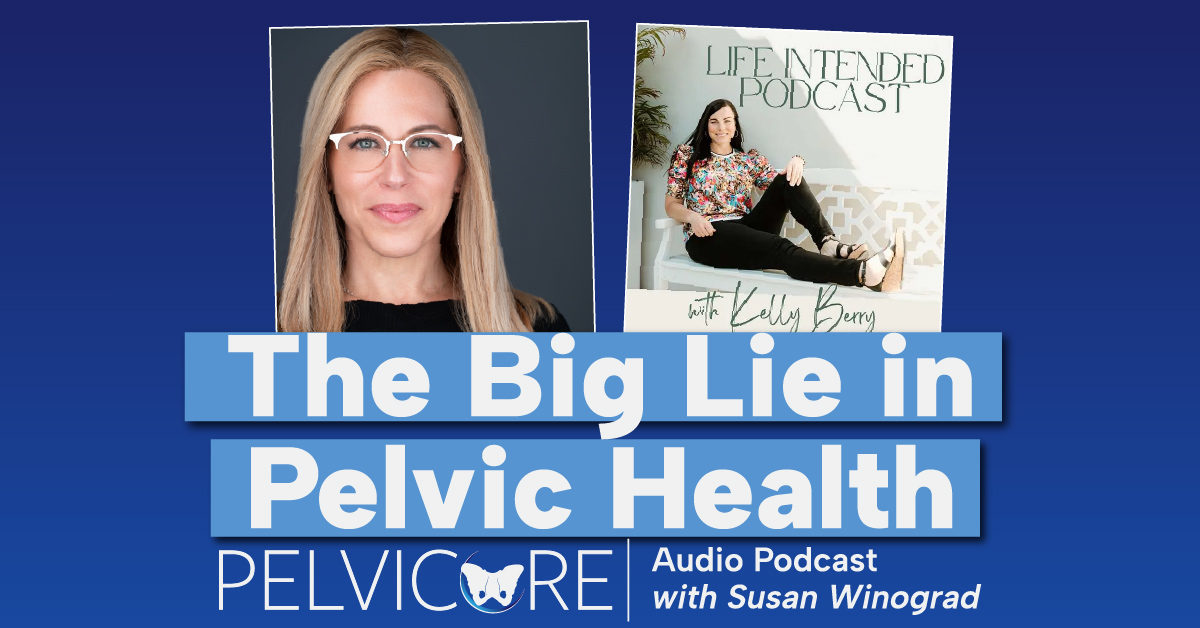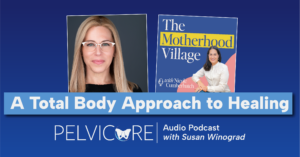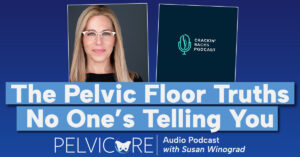Why Pelvic Health Isn’t Just a “Women’s Issue” And Why You Deserve Better Answers
In this episode of Life Intended, host Kelly Berry sits down with Susan Winograd, P.T., Founder of Pelvicore Rehab & Wellness, to challenge the myths that surround pelvic health, especially for women navigating postpartum recovery, perimenopause symptoms, and the overwhelming quest for hormone balance.
Whether you’re a young mom wondering if it’s normal to leak when you sneeze, or a high-performing professional trying to get your brain back during perimenopause, this conversation is for you.
Susan shares how her biopsychosocial approach – integrating nervous system healing, physical therapy, education, and personalized care – is changing the way we think about pelvic floor therapy and long-term health.
And yes, we’re talking about the truth behind Kegels, pelvic gadgets, and those tempting quick fixes too.
What You Can Learn from Susan Winograd
Your body has a story. Your symptoms are chapters. But healing? That’s about reading the whole book, not just flipping to one page.
In this episode, you’ll learn why pelvic health matters more than you think and how to finally get answers that go deeper than “just do some Kegels.”
Here’s what we’re diving into:
How to Know Whether Your Pelvic Health Symptoms Are Actually Normal
“Just wait until you’re done having kids.”
“Leaking is just part of getting older.”
Sound familiar?
Susan explains why common doesn’t mean normal – especially when it comes to leaking, pain with sex, or postpartum symptoms. These issues may be frequent, but that doesn’t mean you have to live with them.
We also hear how cultural messaging (and yes, multi-million dollar undergarment ads) have taught us to tolerate things we can treat.
Her message is clear: if you feel something, say something. Pelvic health is not a luxury – it’s foundational.
What the Biopsychosocial Model Really Means for Healing
Here’s a dangerous assumption: that pain is purely physical.
Susan breaks down how emotional stress, trauma, and nervous system dysregulation directly affect chronic pain and pelvic dysfunction. This is where her biopsychosocial approach shines – treating not just the muscles, but the messaging between your brain and body.
Think your pelvic pain is “all in your head”? Susan says: it’s in your nervous system, and that’s very real.
Her practice uses assessments to understand depression, anxiety, somatic dysregulation, and more then builds a plan to support not just movement, but confidence and long-term healing.
Whether Kegels and Pelvic Gadgets Actually Work
Spoiler: Sometimes Kegels make things worse.
Susan busts some serious pelvic floor myths, especially the overuse of one-size-fits-all exercises like Kegels. In fact, many women with tight pelvic floors are making their symptoms worse by contracting muscles that need to relax.
And those 10,000-Kegel chairs? Susan doesn’t hold back. Quick fixes might feel good in the moment, but they rarely lead to lasting strength, function, or confidence.
If it sounds too good to be true, she says it probably is.
Her Take on Hormone Balance and Brain Fog in Perimenopause
Can’t think straight? Forgetting things? Losing your edge?
You’re not alone – and you’re not broken.
Susan talks about the brain fog, fatigue, and hormonal chaos of perimenopause that often leave women wondering if they’re getting early dementia. Her message? There’s help.
Through her partnership with hormone expert Kelly Maple and her integrative wellness lens, she’s seeing life-changing outcomes in women who finally feel like themselves again.
You don’t have to settle for less clarity, energy, or confidence just because you’re entering a new season.
The Best and Worst Ways to Approach Postpartum Recovery
Not all green lights mean “go run a marathon.”
Susan shares stories of women who returned to exercise too early and paid the price.
Postpartum healing isn’t a timeline, it’s a process. And the best recovery plans consider your goals, your stress, your sleep, your pelvic health – and yes, your nervous system.
The worst way? Jumping back into movement without proper guidance.
The best way? Starting with a personalized evaluation and support from someone who looks at your whole body.







